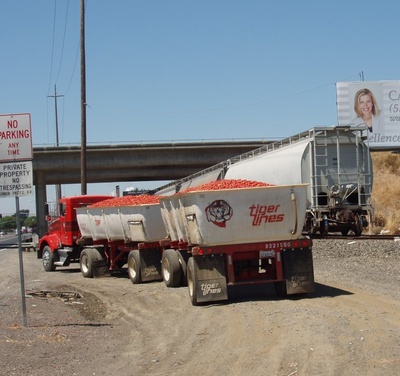A new report released by the UC Berkeley Labor Center finds that record trucking costs in 2021 were not due to a long-term shortage of truck drivers in California.
The report, Ensuring the Supply of Agricultural Truck Drivers: What the State of California Can Do, found that, while there is not a shortage of people interested in truck driving, the industry faces challenges with retaining drivers, with turnover being especially high for long-haul drivers.
The report – the first in-depth look at the labor market for agricultural truck drivers in California and the first study of this workforce anywhere in the U.S. in almost 30 years – found that the disruptions from the COVID-19 pandemic, along with already reduced seasonal driver capacity, were responsible for the rate hikes that were seen in agricultural shipping. Employers were slashing workforces just as the pandemic was hitting and then struggled to rehire drivers and add equipment as the economy restarted, demand surged, and labor markets tightened as part of broader supply chain disruptions.
Report co-author Steve Viscelli, an economic sociologist at the University of Pennsylvania, looked at a wide range of statistical data from state and federal sources and interviewed drivers, shippers, industry associations, and other stakeholders. He said better efforts in recruiting and training drivers would ease turnover and improve job satisfaction, particularly for agricultural trucking, which is critical to California’s economy but can often be seasonal or require specialized equipment.
“Safe and experienced truck drivers are the foundation of U.S. supply chains,” said Viscelli. “I hope this research helps to bring their perspective more fully into the conversation about how to better retain experienced drivers and create successful career paths for the next generation.”
New drivers are likely to attend training school for several weeks and then spend weeks or months out on the road with a trainer. Drivers are often required to sign a training contract that indebts them to the employer unless they stay with the employer for a year.
“Our training system is organized backward,” Viscelli said. “Drivers should be trained locally and employed locally at the start of their careers. Difficult, dangerous long-haul work should then be the well-paid choice of safe and experienced drivers.”
Report recommendations include:
- The state should work with agricultural trucking companies, local training programs, and community colleges to expand and create opportunities for local training that can lead to local jobs that give workers more time behind the wheel in local environments. These programs should be modeled as apprenticeships rather than the “boot camp” style of many current programs.
- California should review the safety impacts of split speed limits for cars and trucks. Truck drivers complained that having to drive more slowly than the cars with which they share the road creates a safety issue.
- The state should also consider adding new public rest areas or expanding existing facilities to allow truckers to find safe places to park and take breaks more easily.
Viscellli suggests that better tracking of where training dollars are going, and fostering partnerships between successful trainers and good employers would maximize the return on those dollars and benefit workers.
The report also found that almost a year since AB-5–the law governing job classification for employees and contractors–went into effect, there are no obvious signs of the negative impact feared by some shipping companies. In fact, rather than discouraging small business trucking, indications are that the law may be fostering an increase in small business formation.
The report includes profiles and quotes from in-depth interviews with truckers throughout California and is released during this week’s “Truckdriver Appreciation Week.” Read the full report.



